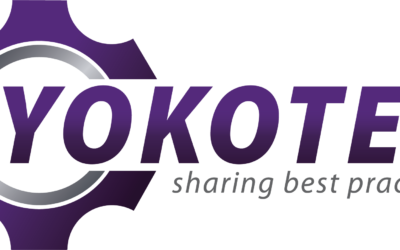CAPEX-Investment project costs
All too often businesses invest in some new project only to be very surprised that the project is overrun on costs and time of delivery.
Just two examples I have from this week are; IT and Opening an additional factory. In the first case the IT project was to implement an ERP system which would miraculously improve so many things in the business. Well, with no miracles, it will certainly improve the profitability of the company that sold you the ERP system. That I can always be certain of. Any ERP system takes 40% longer to implement and costs 80% more than the agreed budget.
On several occasions I have used the A3 Problem solving method with clients, in implementing IT related (in this recent case, ERP) system. In-fact, all A3 projects I have coached with clients were broken down into;
- 15% have been lean accounting related,
- 15% of A3 projects have been IT related,
- 25% Health and Safety related and
- 45%, the rest the normal stuff (quality, productivity, HR related problems).

Of course “Lean six-sigma black-belt, demi-god, operational excellence agile guru, master, ninja experts” will tell you all about the 8 stages of an A3. Nothing wrong with the A3 8 steps. I would however encourage you to read section 2 of my book on the 6 steps of building a culture of problem solving in Practice.
The new factory unit cost much more to set up, had major problems with suppliers and ran over budget by 20%. Both Projects did not have detailed cash-flows and a Project Owner who had authority to make an Andon call when things were not going well. Yes, Andon is a tool which is completely mis-understood by management. It’s not the fault of management they don’t understand Andon, it’s the ninja experts who don’t know it, so they don’t teach it to clients.
Andon is not the cord you pull on the line. It’s a cultural mind-set on building a leadership style. Anyway, I will save the Andon article for some other occasion. Let me focus on the financial aspects of this article.
My advise is always the same.
Before you go into any CAPEX project.
a. Make sure you are really optimising your current resources.
b. In 90% of cases, I have seen great ROI on new CAPEX but never a convincing argument for OPEX solutions.
c. Why, because management often are insincere.
d. It is easier to blame lack of technology, space, time, people or other resources and resort to a new CAPEX project.
e. First, learn to do what you are currently doing much better, then think about spending money on your next CAPEX project.
f. Do a good cash-flow and provide scenarios planning so as to see what would happen if your CAPEX overruns by 50% on costs or is delivered 3 months later than planned. Why, because the probability of this happening is very high that it will happen.

What is your ratio of fixed costs to variable costs?
You need to break this down into short term commitments of up to 12 months and commitments that you can dispose of in say within 3 and 6 months.
- Any well designed cash-flow forecast management system should look into the future for the next three to six months, on a rolling basis.
- This means that at the end of each month, a detailed forecast is presented for the following three to six months.
- Your Top Team are the co-owners of this Cash-flow model.
- The Cash-flow model can also be the basis of managing a company budget.
- Yearly business plans and budgets are becoming more and more useless. A much better way is to use a Hoshin method or the Obeya method. I personally prefer the Obeya method to managing projects, especially if they require engagement of several teams and are to follow a given set of company goals.
“The art of a good business leader is to continually strive in reducing fixed costs as a % of total costs, whilst improving a strong cash-flow. This way, shortening the time between order and final payment, whilst engaging and developing employees through problem solving.
M. Forkun
My next article will focus on the challenges today’s leaders are experiencing during this COVID-19 crisis.
The title of my next article is:, “The Loneliness of the Long Distance Leader”.
The article will address the loneliness, anxiety, frustration, stress and uncertainty many Business Leaders are facing today. Many of the elements in the article are derived from the 12 Habits of Lean Leaders Way Master Class programme.
This article has been produced with the support of the Lean Leadership Way Institute,
llw-institute.com within the YOKOTEN principles of sharing best practices.
If you have found this article valuable, please let us know.
Mark Forkun
Right now, we cannot visit our clients and Genba, “Go and See” and advise. What we can do instead is use the internet for online solutions to “listen and advise”.
We can: Perform Virtual Genba walks, listen and advise on your Problem Solving issues. Talk to you through the chaos and sort out what can be visualised, controlled and standardised and what is non-standard and needs a different approach. We can coach, mentor, advise and do training.
On-site work: Prior to entering onto Client premises we go through all the necessary Health & Safety



